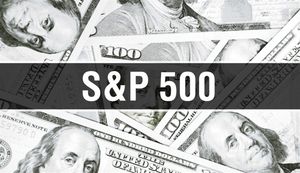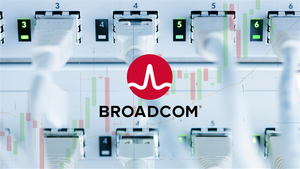Financial News
Stagflationary Fears Loom: Fed Grapples with Persistent Prices Amidst Economic Slowdown

The global economy finds itself at a precarious crossroads, grappling with the twin challenges of persistently "sticky" inflation and an undeniable deceleration in growth. This delicate equilibrium has thrust the Federal Reserve into an unenviable balancing act, as it strives to tame rising prices without pushing the economy into a deeper recession. The immediate implications are profound, casting a shadow of uncertainty over financial markets and forcing investors, businesses, and consumers alike to recalibrate their expectations for the coming months.
The dilemma for the U.S. central bank is clear: despite mounting evidence of a weakening labor market and slowing economic activity, core inflationary pressures, particularly in the services sector and fueled by escalating trade tariffs, refuse to abate. This complex environment not only complicates monetary policy decisions but also ignites fears of a potential "stagflationary" period – a scenario characterized by high inflation coupled with stagnant economic growth – echoing some of the toughest economic chapters in recent history.
The Confluence of Sticky Prices and Cooling Engines
The current economic landscape is defined by the convergence of two powerful, and often contradictory, forces. On one hand, inflation, particularly the "sticky" variety, remains stubbornly elevated. Sticky inflation refers to price increases in goods and services that adjust slowly over time, often tied to contracts, regulations, or long-term trends, such as rent, insurance, medical care, and, critically, wages. The Federal Reserve Bank of Atlanta’s Sticky Price Consumer Price Index (CPI) highlights these less volatile components, indicating a deep-seated inflationary pressure distinct from the more fluctuating prices of energy and food.
As of January 2025, the annual CPI inflation stood at 3%, with core CPI (excluding volatile food and energy prices) also showing a concerning month-over-month increase. Projections for August 2025 suggest these figures will remain elevated, with CPI at 2.9% year-over-year and core CPI at 3.1% year-over-year. Key drivers include persistent services inflation, sustained wage increases that feed into higher costs, and a significant surge in trade tariffs. The effective U.S. tariff rate has climbed to approximately 19% in September 2025, its highest level since 1933, threatening to push up monthly inflation, especially in core goods like household furnishings, apparel, and recreation. The downward pressure from previously moderating goods prices, such as used cars, has also diminished.
Simultaneously, the U.S. economy is flashing clear warning signs of slowing growth, most notably in the labor market. Job growth has decelerated dramatically, and unemployment figures are ticking upwards. Recent revisions revealed that employers added 911,000 fewer jobs from April 2024 through March 2025 than initially reported – the largest preliminary downward revision on record. The August jobs report further underscored this weakness with a broad-based slowdown in hiring and job losses across manufacturing and government sectors. Fewer workers are switching jobs, indicating a decline in employee confidence and a corresponding reduction in wage bargaining power, leaving wage growth struggling to keep pace with the rising cost of living. Economists point to ongoing trade uncertainties, the burden of tariffs on businesses, and stricter immigration policies impacting labor supply as contributing factors to this slowdown.
This dual challenge puts the Federal Reserve in an acute bind. Its dual mandate is to achieve maximum employment and price stability. The persistent inflation, especially in its sticky components, limits the Fed’s ability to aggressively cut interest rates without risking a reacceleration of prices. However, the visibly weakening labor market and slowing economic growth create immense pressure for the Fed to ease monetary policy to stave off a more severe economic downturn, such as a recession or the dreaded stagflation. Market participants, keenly watching these developments, largely anticipate a 25-basis-point reduction in the federal funds rate in September 2025, primarily driven by the softening employment picture, with an 87% probability of such a move. Further cuts are being mulled for early 2026. However, if inflation proves resistant to these cuts, the Fed's ability to stimulate the economy without reigniting price pressures will be severely tested, potentially leading to a prolonged period of slower growth with elevated costs, as warned by the International Monetary Fund (IMF) regarding services inflation. Fed Chair Jerome Powell maintains a "data-dependent" stance, but recent signals suggest a lean towards easing to prevent an economic slowdown, even if inflation slightly overshoots the target.
Tech Giants and Consumer Staples: A Tale of Two Sectors
In an economic climate characterized by sticky inflation and slowing growth, certain sectors and public companies are poised to experience vastly different fortunes. The challenging environment creates both headwinds and tailwinds, depending on a company's business model, pricing power, and sensitivity to interest rates and consumer spending.
Companies with strong pricing power and essential goods or services are often considered "winners" during periods of sticky inflation. These include firms in the consumer staples sector, which provide goods and services that consumers need regardless of the economic climate, such as food, beverages, and household products. Companies like Procter & Gamble (NYSE: PG) and Coca-Cola (NYSE: KO) often demonstrate resilience, as their products are non-discretionary. Their ability to pass on higher input costs to consumers, coupled with consistent demand, can protect profit margins. Similarly, certain healthcare companies may also fare relatively well, as demand for medical services tends to be less elastic. Large, established companies with strong balance sheets and access to capital may also be better positioned to weather economic headwinds compared to smaller, more indebted firms.
Conversely, sectors highly sensitive to consumer discretionary spending and higher borrowing costs often emerge as "losers." The technology sector, while broadly innovative, includes many growth companies that rely on lower interest rates for financing future expansion and whose valuations are often predicated on long-term growth prospects. Companies like NVIDIA (NASDAQ: NVDA), despite its strong market position, or software-as-a-service (SaaS) providers, could face headwinds if tighter financial conditions persist and businesses scale back IT spending. Furthermore, companies in the retail sector that offer non-essential goods, such as luxury brands or certain apparel retailers, may see reduced demand as consumers' purchasing power is eroded by inflation and economic uncertainty. Housing-related companies, including homebuilders like D.R. Horton (NYSE: DHI) and real estate investment trusts (REITs), could also struggle if higher interest rates continue to suppress mortgage demand and property development.
The energy sector, on the other hand, presents a mixed picture but can often benefit from persistent inflation, particularly if it's driven by supply-side factors or geopolitical tensions. Oil and gas producers, such as ExxonMobil (NYSE: XOM) or Chevron (NYSE: CVX), can see increased revenues and profits when commodity prices remain elevated. However, their input costs can also rise, and global demand slowdowns could eventually temper gains. Financial institutions (banks), represented by firms like JPMorgan Chase & Co. (NYSE: JPM), might initially benefit from higher net interest margins if rates rise faster than deposit costs, but a significant economic slowdown could increase loan defaults and reduce lending activity, ultimately hurting profitability. Companies that are heavily reliant on international trade, particularly those with significant import exposure, could also face pressure from rising tariffs and the potential for a weakening U.S. dollar, which increases the cost of imports.
Ultimately, the impact on individual companies will depend on their specific market positioning, operational efficiency, debt levels, and ability to adapt to a challenging economic environment. Those that can innovate, maintain cost discipline, and cater to non-discretionary demand are likely to prove more resilient, while those with high growth expectations, significant debt, or exposure to discretionary spending may face a more difficult path. The market will closely scrutinize earnings reports and forward-looking guidance for signs of how companies are navigating this complex economic terrain.
A Looming Shadow: Industry-Wide Shifts and Global Ramifications
The convergence of sticky inflation and slowing growth transcends individual company performance, triggering broader industry-wide shifts and carrying significant global ramifications. This challenging economic environment is not merely a cyclical downturn but hints at deeper structural changes and policy pressures that will redefine industry landscapes and reshape international trade dynamics.
One significant trend is the increasing focus on supply chain resilience and localization. The tariffs contributing to sticky inflation, coupled with geopolitical tensions, are forcing industries to re-evaluate their globalized supply chains. Companies across manufacturing, technology, and retail are exploring strategies to diversify suppliers, nearshore or reshore production, and build redundancies to mitigate future disruptions and tariff impacts. This could lead to increased domestic investment and job creation in some regions but also higher production costs and potentially slower innovation due to reduced access to global expertise. Industries heavily reliant on international trade, such as automotive manufacturing, electronics, and apparel, will be at the forefront of this transformation.
Regulatory and policy implications are also profound. Governments and central banks worldwide are grappling with similar inflationary pressures and growth concerns, though with varying degrees of success and policy flexibility. The U.S. Federal Reserve's actions have ripple effects globally; a tighter stance to combat inflation could lead to a stronger dollar, making imports cheaper for the U.S. but potentially exacerbating financial instability in emerging markets through capital outflows and increased debt burdens. Conversely, a premature easing could re-ignite inflation, forcing other central banks to maintain tighter policies. The ongoing debate around tariffs also raises questions about the future of global trade agreements and multilateral cooperation, potentially leading to increased protectionism and fragmentation of global markets.
Historically, the current situation draws parallels to the "stagflation" era of the 1970s, characterized by high inflation, slow economic growth, and rising unemployment. While the structural causes differ (e.g., today's supply chain issues vs. 1970s oil shocks), the policy dilemma for central banks is remarkably similar. Lessons from that period emphasize the difficulty of dislodging entrenched inflation expectations without triggering a significant recession. However, today's economy also benefits from greater monetary policy independence, more flexible labor markets, and advanced technological capabilities that could offer different pathways out of the current predicament. The challenge lies in applying these lessons without repeating past mistakes.
Furthermore, the broader societal impact extends to income inequality and consumer behavior. Sticky inflation disproportionately affects lower-income households, whose budgets are more heavily weighted towards essential goods and services experiencing persistent price increases. This could lead to shifts in consumer spending patterns, favoring discount retailers and private-label brands over premium offerings. Businesses will need to adapt their marketing and pricing strategies to cater to increasingly cost-conscious consumers, while governments may face pressure to implement social safety nets or wage policies to alleviate the burden on vulnerable populations. The interplay of these forces will shape not just financial markets but the fundamental structure of global economic activity for years to come.
Navigating the Choppy Waters: What Comes Next
The path forward for the global economy, and particularly for U.S. financial markets, remains fraught with uncertainty, demanding careful navigation from policymakers, businesses, and investors alike. In the short term, all eyes will be on the Federal Reserve's September meeting, where a 25-basis-point rate cut is widely anticipated. This move, primarily driven by concerns over slowing growth and a weakening labor market, aims to provide some relief to the economy. However, the efficacy of such a cut in a sticky inflation environment will be closely scrutinized. If inflation proves more entrenched than expected, the Fed's room for further easing will be severely constrained, potentially leading to a prolonged period of "higher for longer" interest rates, even if nominal cuts occur.
In the long term, the economy faces several potential scenarios. A "soft landing," where inflation gradually recedes without a severe recession, remains the elusive ideal. This would require inflation to cool sufficiently for the Fed to ease monetary policy without reigniting price pressures, while the labor market stabilizes. However, the risk of a "hard landing" – a deeper recession – is palpable if aggressive rate hikes to combat inflation, or insufficient easing in the face of slowing growth, tip the economy over the edge. Another significant concern is the possibility of "stagflation," where high inflation persists alongside sluggish growth and rising unemployment, presenting the most challenging scenario for policymakers and markets.
For businesses, strategic pivots and adaptations will be crucial. Companies will need to focus on enhancing operational efficiency, streamlining supply chains, and exploring pricing strategies that balance consumer affordability with maintaining profit margins. Investment in automation and technology could help mitigate labor cost pressures. Diversification of revenue streams and geographic markets may also offer resilience. Those with strong balance sheets will have an advantage in acquiring distressed assets or investing in growth opportunities that emerge from market dislocations. Industries sensitive to interest rates, such as real estate and automotive, will need to innovate financing solutions and product offerings to attract consumers in a potentially tighter credit environment.
Market opportunities and challenges will emerge across asset classes. In equities, a flight to quality and defensive sectors like consumer staples and utilities may continue, while growth stocks could remain volatile until a clearer economic picture emerges. Bonds might see increased demand if recession fears escalate, but persistent inflation could cap yield declines. Commodities, particularly gold and other real assets, could serve as inflation hedges. Investors will face the challenge of distinguishing between temporary market volatility and fundamental shifts in economic conditions, requiring a nuanced approach to portfolio construction and risk management. The U.S. dollar's trajectory will also be a key factor, potentially weakening with rate cuts but finding support if global growth slows more dramatically than in the U.S.
The Unfolding Narrative: A Call for Vigilance
The current economic confluence of sticky inflation and slowing growth represents a pivotal moment, demanding vigilance from all market participants. The Federal Reserve's unprecedented balancing act underscores the complexity of managing an economy buffeted by lingering supply-side shocks, evolving trade policies, and shifting labor market dynamics. The key takeaways from this period revolve around the enduring challenge of inflation, the fragility of economic growth, and the profound implications for monetary policy.
Moving forward, the market will remain exquisitely sensitive to incoming economic data. Critical indicators to watch include the monthly Consumer Price Index (CPI) reports, which will signal whether inflation is truly beginning to recede; the Employment Situation Summary, which will provide insights into the health and trajectory of the labor market; and manufacturing and services purchasing managers' indexes (PMIs), offering a forward-looking view of economic activity. Investors should also closely monitor corporate earnings reports for signs of how companies are adapting to higher costs and potentially reduced consumer demand, paying particular attention to profit margins and forward-looking guidance.
The significance of this period lies in its potential to redefine economic paradigms and investment strategies for the foreseeable future. A lasting impact could be a recalibration of inflation expectations, with both consumers and businesses bracing for a world where prices are less stable than in the pre-pandemic era. This could lead to a more cautious approach to spending and investment, and a greater emphasis on inflation-hedging strategies in portfolios. While the immediate focus is on avoiding a deep recession, the long-term implications involve structural adjustments in global supply chains, trade policies, and potentially, a re-evaluation of the limits of monetary policy in a supply-constrained world.
Ultimately, navigating the current economic environment requires a blend of prudence, flexibility, and a deep understanding of interconnected global forces. Investors should consider diversified portfolios, a focus on high-quality assets, and a willingness to adapt strategies as new data emerges. The unfolding narrative of sticky inflation meeting slowing growth is a testament to the dynamic and often unpredictable nature of economic cycles, making continuous research and informed decision-making paramount in the months ahead.
More News
View More





Quotes delayed at least 20 minutes.
By accessing this page, you agree to the following
Privacy Policy and Terms Of Service.



